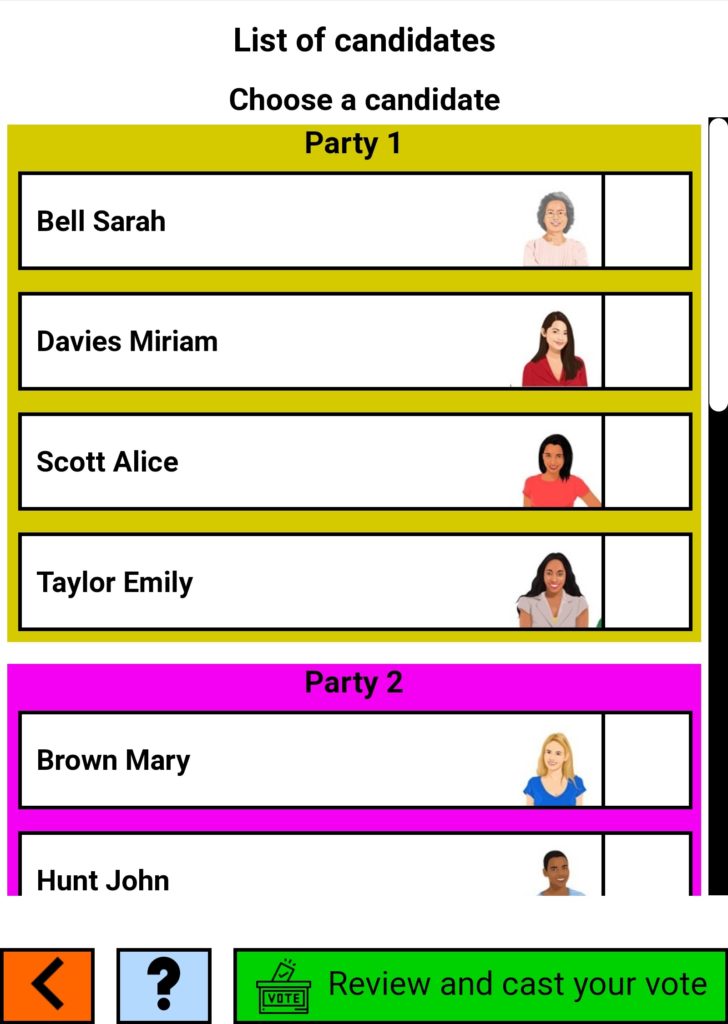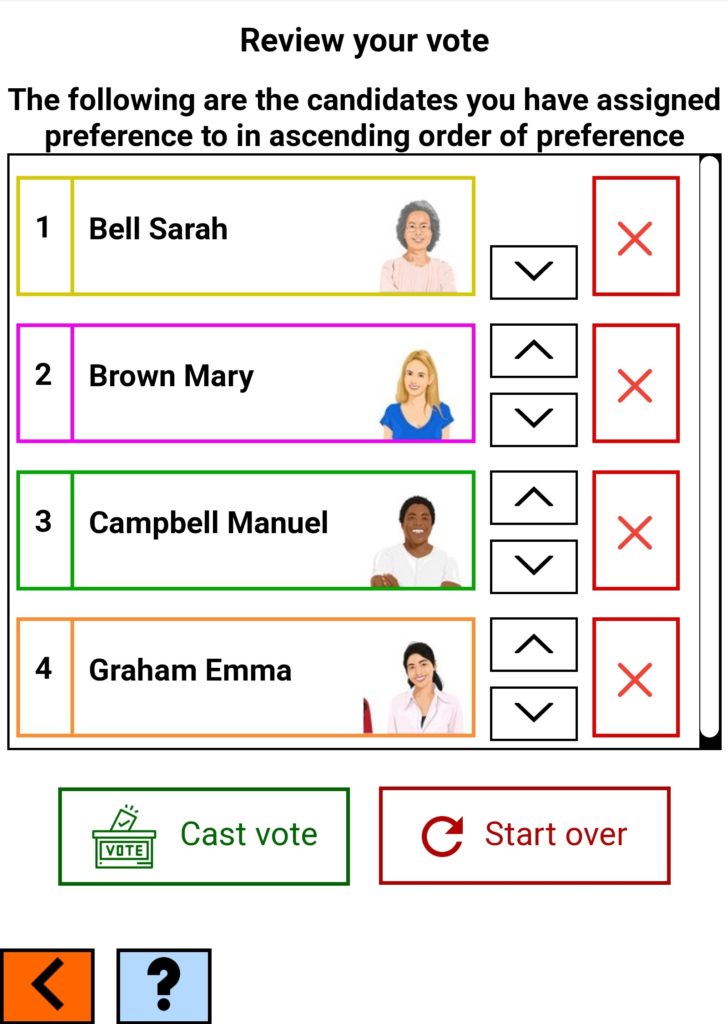At present, the methods of casting a vote in a Maltese election is by paper ballot, Braille ballot or an audio guide. If a person is unable to vote through one of these options, the assistance of an electoral representative is offered, thus compelling the citizen to reveal the intended vote to the assistant. According to the Universal Declaration of Human Rights [1], all citizens are entitled the right of a secret vote. Therefore, it is of the utmost importance to provide a method that would offer independent voting for these citizens.
into more accessible designs and developed into web applications. A user- centric approach was taken to further improve the prototypes and users from the target audience evaluated the mid-fidelity and high- fidelity prototypes. The measurements extracted from established through the testing sessions involving the users were: effectiveness, efficiency and user satisfaction. These criteria enabled the identification of any significant differences between the usability of the prototypes. Feedback provided by the participants was used to support these findings. Since the testing was carried out by persons with disability, the usability measurements would reflect the accessibility of the artefacts.
Using the high-fidelity prototype, participants were able to cast the intended vote in under five minutes. All testers were also able to make the instructed changes to the vote. All prototypes obtained a good user satisfaction score, the highest mean score being 95.4 for the final prototype. The high-fidelity prototype, which was tested on a small number of participants, showed an improvement in effectiveness, efficiency and satisfaction although no statistical significance can be claimed.

There are two main aspects to creating a voting machine: interface design and security. Due to time constraints, this project will only target the former. The aim of this study was to design an interface for a voting machine that would allow independent voting by those who are not able to do so using any of the methods currently available.
The artefact has been developed in an iterative and participatory design process. Initially, three wireframe designs were created. With the involvement of experts in accessibility, the low-fidelity prototypes were refined

References/Bibliography:
[1] United Nations General Assembly, “Universal Declaration of Human Rights,” 1948.
Student: Martina Gauci
Course: B.Sc. IT (Hons.) Software Development
Supervisor: Dr. Colin Layfield
Co-supervisor: Dr. Conrad Attard
